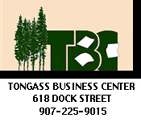 By LISA HOFFMAN Scripps Howard News Service June 22, 2006
Neither Congress nor most state legislatures have imposed specific boundaries on how, where or when such video cameras can be trained on ordinary law-abiding citizens as they go about their daily lives. Nor have they, or any regulatory bodies, set legal parameters for the length of time those images can be kept, who is allowed to see them, for what purposes they can be used, who will enforce the rules, or how violators will be punished. About the only recourse for those who believe their privacy has been violated is a civil lawsuit.
This absence of oversight troubles civil liberties experts, along with camera proponents who fear abuse will obscure the technology's promise as an anti-terror tool. Extortion, blackmail, the compilation of video dossiers and racial profiling are just some of the bad uses to which the images could be put. Already, unauthorized images from security cameras are appearing on the Internet, including those of the suicide of a young man outside New York City public housing project. "There is the potential for insidious abuse," said James Ross, assistant criminal justice professor at the State University of New York at Brockport, who is an authority on privacy and security issues. Critics also worry that unregulated camera systems pose a potential threat to some fundamental facets of the American way of life. "Modern surveillance networks can ... eliminate much of the privacy and anonymity individuals take for granted, chill a substantial amount of free expression, (and) inhibit people from freely associating with others," said a May report by the Constitution Project, a bipartisan advisory group that includes former FBI director William Sessions, former Clinton White House chief of staff John Podesta, former American Civil Liberties Union director Morton Halperin and ex-Rep. Mickey Edwards, R-Okla. So troubling are the risks that David Keene, chairman of the American Conservative Union and a Constitution Project leader, said he has abandoned his usual antagonism toward government regulation when it comes to spy cameras. He said he favors some sort of requirement that cities or police departments that receive federal funds must abide by a set of privacy-protecting standards. Video security industry manufacturers say the technology exists to forestall many abuses. Cameras can be programmed to prevent looking into home or hotel room windows, and stops can be installed to prevent panning in a certain direction, according to Kathleen Rhodes, a spokeswoman for Clovis, Calif.-based Pelco, one of the largest video security equipment manufacturers in the world. Barry Levine, chief executive of Sperry West, a San Diego video surveillance products maker, agreed. "Properly installed, they will provide privacy," he said. To avoid problems, a handful of the estimated 200 towns and cities in 37 states that have deployed spy cameras have stepped into the regulatory vacuum and crafted their own restrictions. In Washington, D.C., for example, the city council in 2002 passed some of the strictest rules of any city. Under them, the District of Columbia's 19-camera system can only be activated if the police chief authorizes it, an official above the rank of lieutenant monitors its use, and all images are destroyed after 10 days, if not needed for prosecution. No cameras may focus on hand bills, flyers or reading material carried by members of the public. Signs must be posted notifying citizens of the presence of cameras, and quarterly audits must be conducted to make sure no abuses are occurring. To encourage other jurisdictions to follow Washington's lead and forge a set of protections, the International Association of Chiefs of Police, the Security Industry Association trade group, and the Constitution Project have posed guidelines for the operation of video surveillance systems. Among the proposed rules: - Hold public hearings on plans to install cameras. Inform the public of locations where they will be under surveillance, including with signs posted at the areas under video scrutiny. - Strictly limit access to equipment and images on a "need-to-know" basis. Institute restrictions to ensure images cannot be tampered with or duplicated, and maintain a log to document who has had access to the pictures. - Destroy images after about a week unless they are needed for investigation or prosecution. - Provide training in privacy and ethical issues, and delineate clear penalties - including criminal ones - for violating them. - Use technology that automatically blurs or blocks pictures taken when cameras are trained on windows or other private spaces. Prohibit cameras in public restrooms and locker rooms. - Forbid singling out people by race, gender, sexual orientation, national origin or disability for scrutiny. - Establish a system of independent audits and evaluations.
Distributed to subscribers for publication by Scripps Howard News Service, http://www.shns.com Publish A Letter on SitNews Read Letters/Opinions
|
||


